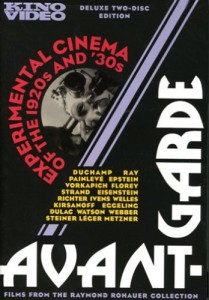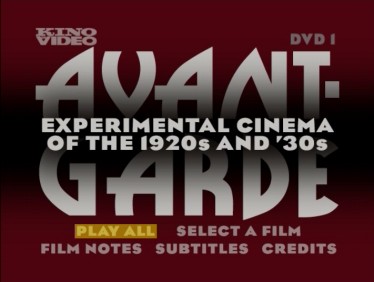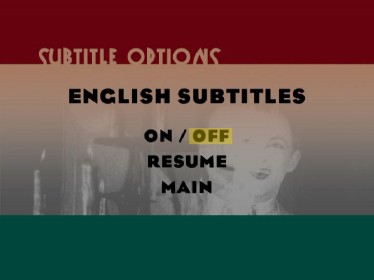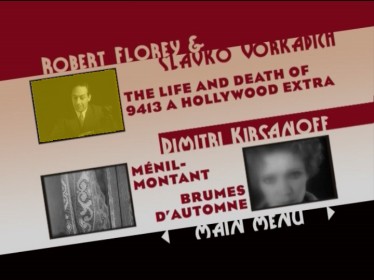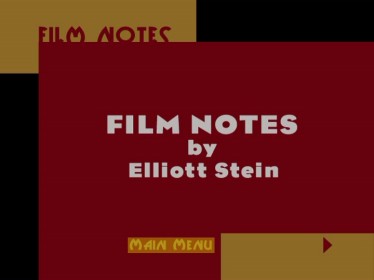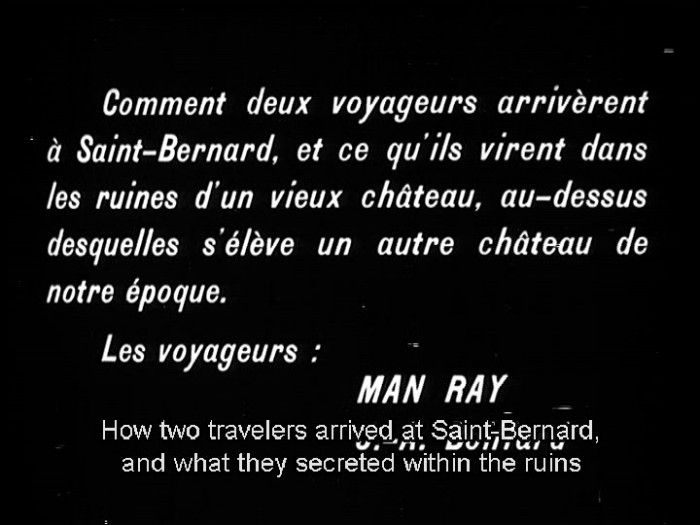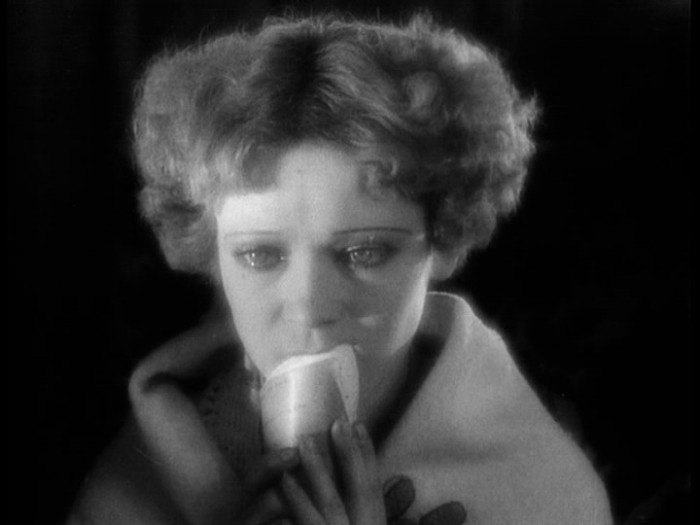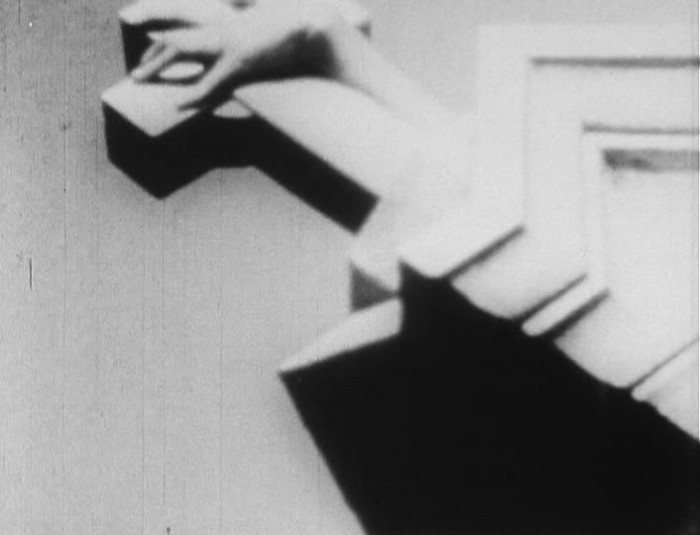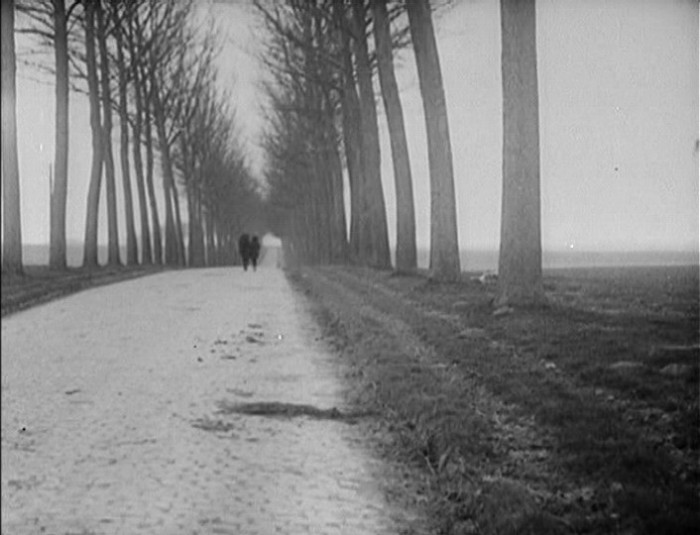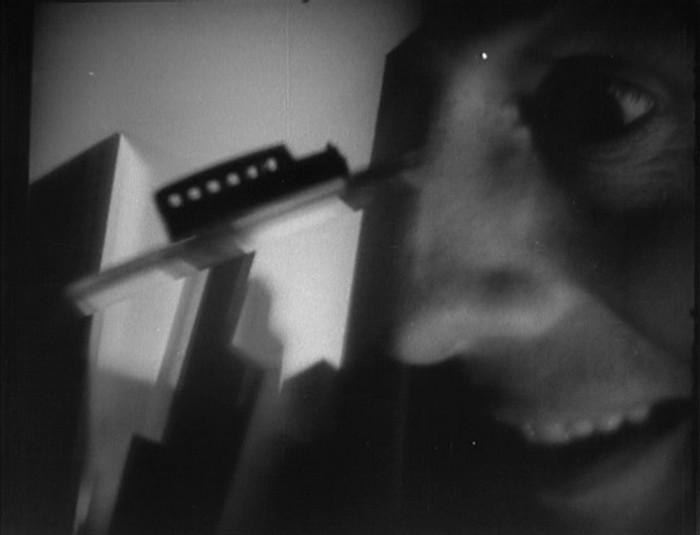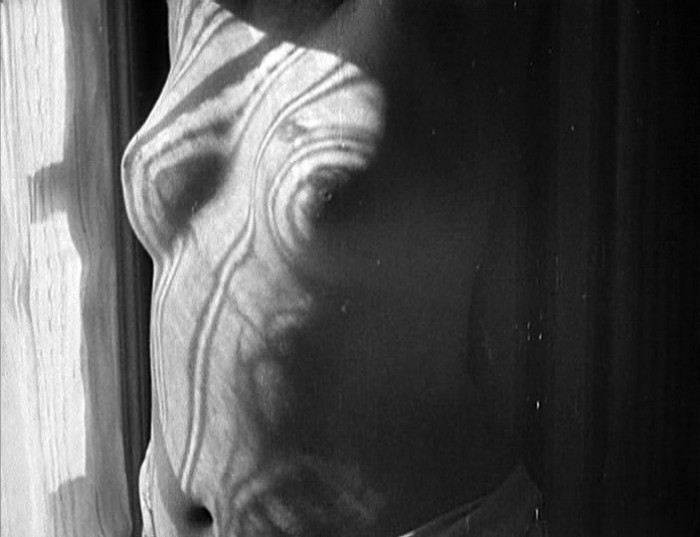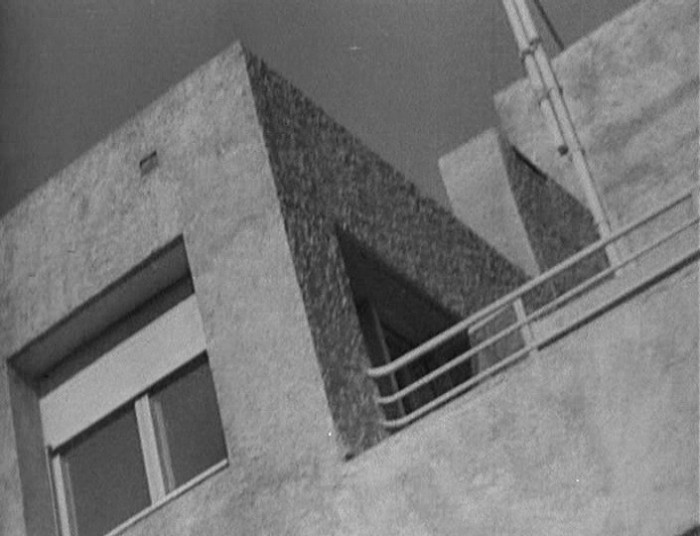|
Firstly, a massive thank you to our Patreon supporters. Your generosity touches me deeply. These supporters have become the single biggest contributing factor to the survival of DVDBeaver. Your assistance has become essential.
What do Patrons receive, that you don't?
1)
Our
weekly
Newsletter
sent to your Inbox every
Monday morning!
Please consider keeping us in existence with a couple of dollars or more each month (your pocket change!) so we can continue to do our best in giving you timely, thorough reviews, calendar updates and detailed comparisons. Thank you very much. |
![]()
![]()

![]()
![]()
|
Search DVDBeaver |
S E A R C H D V D B e a v e r |
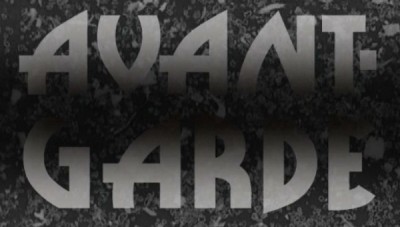
directed
by Dimitri Kirsanoff, Orson Welles, Man Ray, Marcel Duchamp, Sergei Eisenstein
etc.
France / USA / Germany / Netherlands 1921
Kino's 2023 Silent Avant-Garde Blu-ray is reviewed HERE
The Boxset includes:
|
Le Retour à la raison (The Return to Reason) Directed by Man Ray France 1923 2 Min. This very short film by the silent film pioneer Man Ray is a classic example of cinematic Dadaism. The most beautiful shot in this film shows Kiki of Montparnasse’s nude torso with reflections of light on it. |
Emak-Bakia (Leave Me Alone) Directed by Man Ray France 1926 16 Min. “Le Retour à la raison” was obviously an early experiment for Man Ray to create “Emak-Bakia”, which is not only longer, but even more daring and beautiful than “Le Retour à la raison”. |
L’Étoile de mer (The Starfish) Directed by Man Ray France 1928 15 Min. “We are forever Lost in the desert of eternal darkness” This is a very surrealistic piece of work by Man Ray, with a moody, ethereal score and Kiki of Montparnasse playing the main character. There are distorted shots of the characters through glass that work perfectly in the dreamlike atmosphere of the film. |
|
|
||
| Les Mystères du Château du Dé (The Mysteries of the Château of Dice) Directed by Man Ray France 1929 20 Min. A very energetic and rhythmic score leads us into “Les Mystères du Château du Dé”, which is probably Man Ray’s best film featured in this set. Flawlessly creative composition and a great eye for visual details make this an exciting journey! |
Ménilmontant Directed by Dimitri Kirsanoff France 1926 37 Min. Dimitri Kirsanoff’s masterpiece “Ménilmontant” opens with a furiously fast edited axe murder that somehow foreshadows “Battleship Potemkin”. It then resolves to be a moving drama about two sisters, one of them played by Nadia Sibirskaia who is probably the most talented silent film actress next to Lillian Gish. Kirsanoff tells his poetic story without intertitles and knows exactly that the facial expressions of his actors reveal everything we have to know about the emotional states of the characters. The mise-en-scene is fabulous, the melancholic score underlines the beauty of the images and all that is presented on a very good print. There is a scene in which an old man shares his bread with Sibirskaia, that is so beautiful and tragic that it moved me to tears. This is not only the highlight of the collection, but also one of the greatest films I have ever seen. |
Brumes d’Automne (Autumn Mists) Directed by Dimitri Kirsanoff France 1928 12 Min. “Brumes d’Automne” proves that Dimitri Kirsanoff is one of the most underrated of all great directors. Because this is a quite short cinematic poem, “Brumes d’Automne” is not as moving as “Ménilmontant”, but contains some of the most beautiful pictures ever put on celluloid. I especially think of Nadia Sibirskaia’s face, with tears in her eyes. The film also makes use of contrapuntal sound and features a magnificent score by Paul Devred. |
|
|
||
| The Life and Death of 9413, A Hollywood Extra Directed by Robert Florey and Slavko Vorkapich US 1928 13 Min. This satirical experimental work shows cinematographer Gregg Toland (Citizen Kane, The Grapes of Wrath) at his very best. Toland’s use of expressive light and shadows make this an extraordinary film to look at. The classic jazz score perfectly underlines the pictures and creates a dreamlike feeling. There is a reason why Toland is known as one of cinema’s greatest cinematographers. |
Lot in Sodom Directed by James Sibley Watson and Melville Webber US 1933 27 Min. Watson and Webber have created their own interpretation of the Biblical story of Lot. While it has an interesting style, it sometimes feels highly pretentious, as if the directors have tried hard to achieve the visual brilliance of the French avant-garde directors of the 20s, but failed in many ways. This is one of the least satisfying films in the collection. |
Rhythmus 21 (Film Is Rhythm) Directed by Hans Richter Germany 1921 3 Min. “Rhythmus 21” was Hans Richter’s first film. It contains three minutes of geometrical visuals, constantly changing in size and form. |
|
|
||
| Vormittagsspuk (Ghosts Before Breakfast) Directed by Hans Richter Germany 1928 9 Min. This 1928 Hans Richter-film is a mixture of surrealism and slapstick comedy. Its quite entertaining, but remains a shallow experimental work without the poetic depth of the Kirsanoff and Ray-films. |
Anémic Cinéma Directed by Marcel Duchamp France 1926 6 Min. One of the many visual experimental works in the Duchamp, but nothing more than that. The disc claims that the modern score was composed by Donald Sosin, although Bret from Kino Video told me it was Larry Marotta. And as much as I enjoyed Marotta's score, I don't think it works properly with the visuals of the film. |
Ballet Mécanique Directed by Fernand Léger France 1924 11 Min. Heavy symbolism, fast cutting and the use of hypnotic optical illusions make “Ballet Mécanique” a very exciting artistic journey through the art of Dadaism. It often recalled pictures of Luis Buñuel’s early work in my mind, as well as Salvador Dalì’s surrealistic paintings. |
|
|
||
| Symphonie Diagonale (Diagonal Symphony) Directed by Viking Eggeling Germany 1924 7 Min. Eggeling’s “Symphonie Diagonale” must have been an enormous influence on Hans Richter’s work. This is less of a “cinépoèm” than an experiment with what you can do with the art form cinema. In that sense its neither dramatic nor touching, but visually attractive and interesting, especially for students of Dadaism. |
Le Vampire Directed by Jean Painlevé France 1939-45 9 Min. One of the few sound films in the collection. Jean Painlevé’s ambitious “Le Vampire” futures a soundtrack that reminded me of those old Cabaret shows. However, this is more of a biological examination of nature than a piece of cinematic art. Its actually quite senseless. |
The Hearts of Age Directed by Orson Welles and William Vance US 1934 8 Min. To see this debut experimental film of Orson Welles is a very exciting experience for me, since he is one of my favorite directors of all time. The first thing that got my attention was the brilliant soundtrack, as well as Welles’ artistic photography. However, this is only a nice little experiment by a young man who would later become a genius of the cinematic art. Nevertheless, “The Hearts of Age” is fun to look at. |
|
|
||
| Überfall (Assault) Directed by Ernö Metzner Germany 1928 22 Min. Ernö Metzner’s “Überfall” is a beautifully photographed film, especially in the end, when the director stars to work with shadows. The film features some extraordinary close-ups and sometimes reminded me of Fritz Lang’s “M”. One of the classically narrative movies in this set. |
La Glace à trois faces (The Three-Sided Mirror) Directed by Jean Epstein France 1927 33 Min. This film features voice-over translation, which I thought was horrible. I would preferred English subtitles, but what can we do? “La Glace à trois faces” itself is a nice drama with convincing performances. |
Le Tempestaire (The Tempest) Directed by Jean Epstein France 1947 22 Min. The print of Le Tempestaire is in very good condition. The picture quality here is much better than on other films from the package (but I’ve still seen much better restored prints of movies from the 40s). This is clearly the better Epstein-film of the two in the collection. Symbolism and mise-en-scene are very interesting, and the moody score (which consists of blowing wind and the noise of the ocean) creates a ghostlike atmosphere. The only thing that I disliked about “Le Tempestaire” was the dialogue. Completely unnecessary. Nevertheless, a very fascinating film. |
|
|
||
| Romance Sentimentale (Sentimental Romance) Directed by Sergei Eisenstein and Grigori V. Alexandrov France 1930 16 Min. “Autumn… sadness… dead love… such are the themes of this old Russian song.” Described as a “cinematographic study” in the beginning, this film from Sergei Eisenstein (Battleship Potemkin) and Grigori V. Alexandrov is in every sense an experimental film. Alexis Archangelskys dynamic score underlines the extremely fast cutting in the beginning and then turns into a more melancholic mood when the directors start with their heavy symbolism. Interesting and quite different. |
Autumn Fire Directed by Herman G. Weinberg US 1931 15 Min. This is another film poem about autumn, the avant-garde generations’ favorite season, and loneliness. Weinberg captured a lot of romantic pictures of nature and underlined them with a sad, nostalgic score. This is a quiet meditation on life and in some way reminded me of some of Ingmar Bergman’s work, at least a few moments. |
Manhatta Directed by Paul Strand and Charles Sheeler US 1921 10 Min. A few mass scenes in this film are quite similar to “Modern Times” and this film is not that different from Chaplin’s classic. It is concerned with the industry and work in New York. Visually mediocre, with a flat soundtrack, I wasn’t really impressed by Strand’s and Sheeler’s film. |
|
|
||
| La Coquille et le Clergyman (The Seashell and the Clergyman) Directed by Germaine Dulac France 1926 31 Min. Very interesting camerawork in this film, but only in the beginning. Dulac masterfully uses light and shadows to create quite an expressionistic mood, only to flush it all down the toilet in the end, where the film becomes one of those pretentious experimental works like “Lot in Sodom” that I can’t stand. |
Regen (Rain) Directed by Joris Ivens Netherlands 1929 14 Min. “Regen” is a visually neat film and a romantic exploration of water. Ivens’ composition is not as eye-catching as in “H²O”, but still nice to look at. |
H²O Directed by Ralph Steiner US 1929 12 Min. “H²O” follows the tradition of “Regen” and is another film about water (as the title reveals). The pictures are beautifully floating in front of you and make this quite a relaxing experience. |
|
|
||
| Even -- As You And I Directed by Roger Barlow, Harry Hay and LeRoy Robbins US 1937 12 Min. The last film in this set is a light-hearted comedy about three friends trying to write scripts for a Hollywood movie contest. Its not as satirical as “The Life and Death of 9413, A Hollywood Extra” but entertaining and funny. Very different from the other films in the set. |
||
|
Resume |
DVD Review: Kino Video - Region 1 - NTSC
| DVD Box Cover |
|
CLICK to order from: |
| Distribution |
Kino Video Region 1 - NTSC |
|
| Runtime | 387 min | |
| Video |
1.33:1
Original Aspect Ratio |
|
| Audio | Silent / Score in Dolby Surround 2.0 | |
| Subtitles | Optional English (on selected films) | |
| Features |
Release Information: Studio: Kino Video Aspect Ratio:
Edition Details:
Chapters |
|
| Comments |
Kino's 2023 Silent Avant-Garde Blu-ray
is reviewed
HERE
The picture
quality varies from film to film. While they all have an expected amount
of damage, films like "The Hearts of Age" seem to have suffered the most.
The sound of the scores is great, both on the old originals as well as on
new recordings. |
DVD Menus
|
|
|
|
|
|
Screen Captures
Subtitle sample
|
|
|
|
|
|
|
|
|
|
|
|
|
|
| DVD Box Cover |
|
CLICK to order from: |
| Distribution |
Kino Video Region 1 - NTSC |
|
![]()
![]()
![]()
![]()


